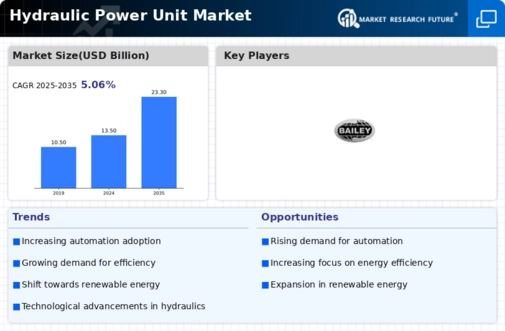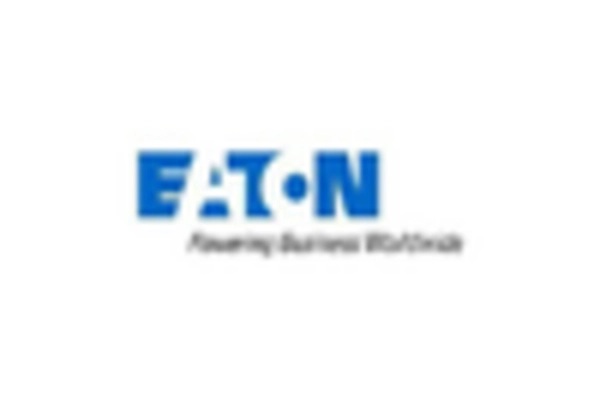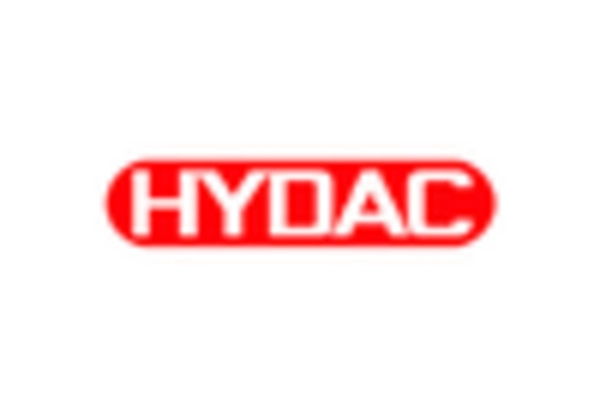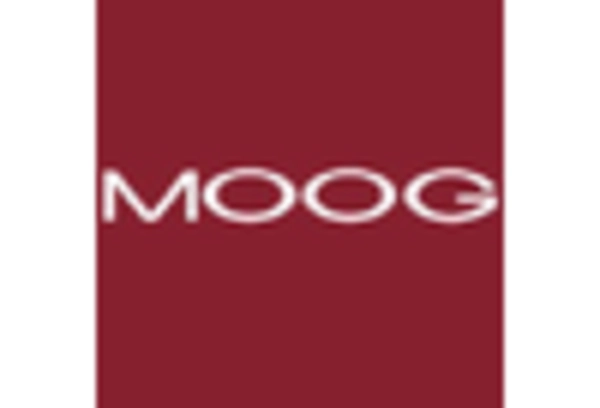Technological Advancements
The Hydraulic Power Unit Market is experiencing a surge in technological advancements that enhance efficiency and performance. Innovations such as IoT integration and smart sensors are becoming increasingly prevalent, allowing for real-time monitoring and predictive maintenance. This trend is expected to drive the market, as companies seek to reduce downtime and improve operational efficiency. According to recent data, the adoption of advanced hydraulic systems is projected to increase by 15% annually, indicating a robust growth trajectory. Furthermore, the integration of automation in hydraulic power units is likely to streamline operations, making them more appealing to industries such as manufacturing and construction. As these technologies evolve, they may redefine the standards of performance and reliability in the Hydraulic Power Unit Market.
Energy Efficiency Regulations
The Hydraulic Power Unit Market is being influenced by stringent energy efficiency regulations imposed by various governments. These regulations aim to reduce energy consumption and greenhouse gas emissions, prompting manufacturers to innovate and develop more energy-efficient hydraulic systems. As industries strive to comply with these regulations, the demand for hydraulic power units that meet energy efficiency standards is likely to increase. Recent data indicates that energy-efficient hydraulic systems can reduce energy consumption by up to 30%, making them an attractive option for businesses looking to lower operational costs. This regulatory environment may drive investment in research and development within the Hydraulic Power Unit Market, as companies seek to create solutions that align with sustainability goals while maintaining performance.
Rising Demand in Construction
The construction sector is a significant driver for the Hydraulic Power Unit Market, as hydraulic systems are essential for various applications, including excavation, lifting, and material handling. The ongoing urbanization and infrastructure development projects are fueling the demand for hydraulic power units. Recent statistics suggest that the construction industry is expected to grow at a compound annual growth rate of 6% over the next five years, which will likely bolster the hydraulic power unit market. Additionally, the increasing complexity of construction projects necessitates the use of advanced hydraulic systems that can provide the required power and precision. This trend indicates a promising outlook for manufacturers and suppliers within the Hydraulic Power Unit Market, as they adapt to meet the evolving needs of the construction sector.
Growth in Renewable Energy Sector
The Hydraulic Power Unit Market is witnessing growth due to the increasing investments in the renewable energy sector. Hydraulic power units are essential in various renewable energy applications, such as wind and hydroelectric power generation. As the world shifts towards sustainable energy sources, the demand for hydraulic systems that can efficiently manage and control energy production is likely to rise. Recent reports indicate that the renewable energy sector is expected to grow by 20% over the next decade, which could significantly impact the hydraulic power unit market. This growth presents opportunities for manufacturers to develop specialized hydraulic solutions tailored for renewable energy applications, thereby expanding their market reach within the Hydraulic Power Unit Market.
Increased Automation in Industries
The trend towards increased automation across various industries is a key driver for the Hydraulic Power Unit Market. As industries adopt automated processes to enhance productivity and reduce labor costs, the demand for hydraulic power units that can support these systems is likely to grow. Automation requires reliable and efficient hydraulic systems to operate machinery and equipment, which positions hydraulic power units as critical components in automated environments. Data suggests that the automation market is projected to expand at a rate of 10% annually, which may correlate with increased demand for hydraulic solutions. This trend indicates that manufacturers in the Hydraulic Power Unit Market must focus on developing products that integrate seamlessly with automated systems to remain competitive.

















Leave a Comment